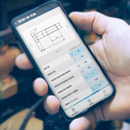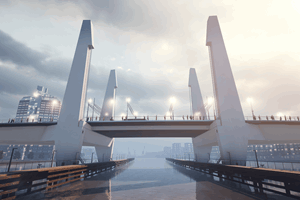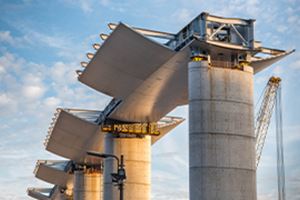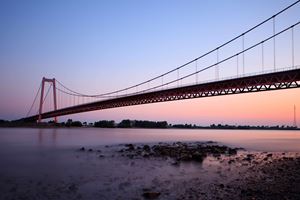
Bridge Design in The Age of Industry 4.0
While Industry 4.0 is gaining traction in the manufacturing industry, the construction industry could also benefit. So how can 4.0 technology support engineers when designing and maintaining bridges?
Industry 4.0 – also known as the fourth industrial revolution – is essentially the application of new digital technologies including automation, connectivity, Big Data, AI and machine learning to the manufacturing industry. The development of smart machines that can communicate with one another and act independently is expected to generate massive gains in productivity and efficiency. At the same time, data analytics will help design more efficient production processes and supply chains.
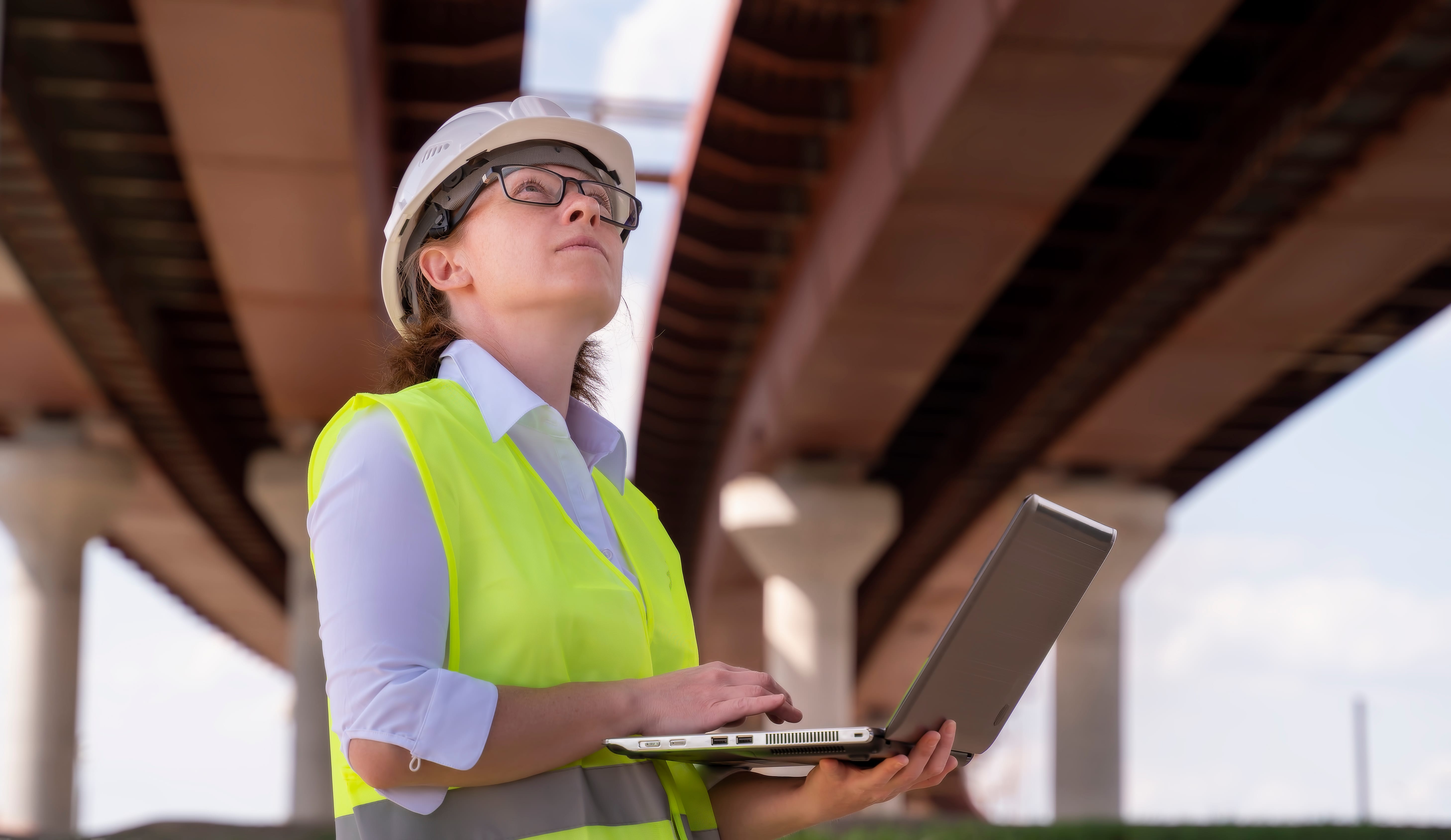
However, while the concept is generally discussed in the context of the manufacturing industry, these changes and emerging technologies will inevitably impact the building and construction industries too. In particular, the way bridges are designed and built could benefit significantly from emerging technologies in a variety of ways.
How does industry 4.0 apply to bridge design?
“In the future, Industry 4.0 will mean that a bridge deliver much more than just carrying traffic from one side to another,”
says Professor Raid Karoumi, Head of Division of Structural Engineering and Bridges at the KTH Royal Institute of Technology in Stockholm, Sweden. “Because of all the sensors installed, it will be able to provide information on traffic loads, traffic density, vehicle speeds and pavement condition.”
Karoumi has over twenty years’ experience in the field and is regularly an advisor to various construction projects, in addition to his work at KTH. From a very young age, he had been fascinated by bridges. He wrote his PhD thesis on the topic of dynamic modelling of suspension and cable-stayed bridges. For him, one of the critical criteria for designing a bridge, in addition to safety and functionality, is maintainability and ensuring all critical components can be accessed for inspection and replacement.
“In newly built bridges, structural health monitoring can help study the behavior of new materials or designs,” he says. “In existing bridges, one of its most important functions is the evaluation of remaining life. Suppose you have a structure with problems relating to fatigue, for example. In that case, you can try to understand the development of strains and variations due to loading and use this information to more precisely calculate when you need to replace a component, such as a steel beam or a connection.”
Using smart products to solve bolt loosening
Recently, Nord-Lock Group began trials of its new Superbolt Load-Sensing Tensioner (LST) – one of the group’s first Industry 4.0 products – on a railway bridge in central Europe. The rail operator is experiencing bolt loosening on noise barriers, affecting around 300 different bridges.
This is due to aerodynamic loads caused by passing trains, which can be traveling up to 200 kph. Noise barriers on bridges are an issue because of the limited space for fasteners. Nord-Lock Group, who were approached by a third-party to help develop a solution, saw this as an opportunity to test its new smart product.
“The LST is essentially one of our Superbolt multi-jackbolt tensioners (MJTs) with a connector on it for readout devices (wired or wireless) and a sensor mounted inside,” explains Pierre Kellner, Business Developer Smart Products and Services at Nord-Lock Group. “We discovered that there is a correlation between the circumferential expansion of the Superbolt nut body and the amount of preload on the Superbolt. The more preload the Superbolt has, the more its nut body expands. What the LST does is to measure this expansion, and since it correlates to the amount of preload, the expansion can be translated into preload values in kilonewtons.”
The LST can measure preload at a frequency of 100kHz, and in tests has shown an accuracy of plus/minus five per cent or better. As part of the trial, four LSTs were installed on a rail bridge and will deliver continuous measurements as each train passes. In order not to generate too much data, the frequency has been reduced to 600 Hz.
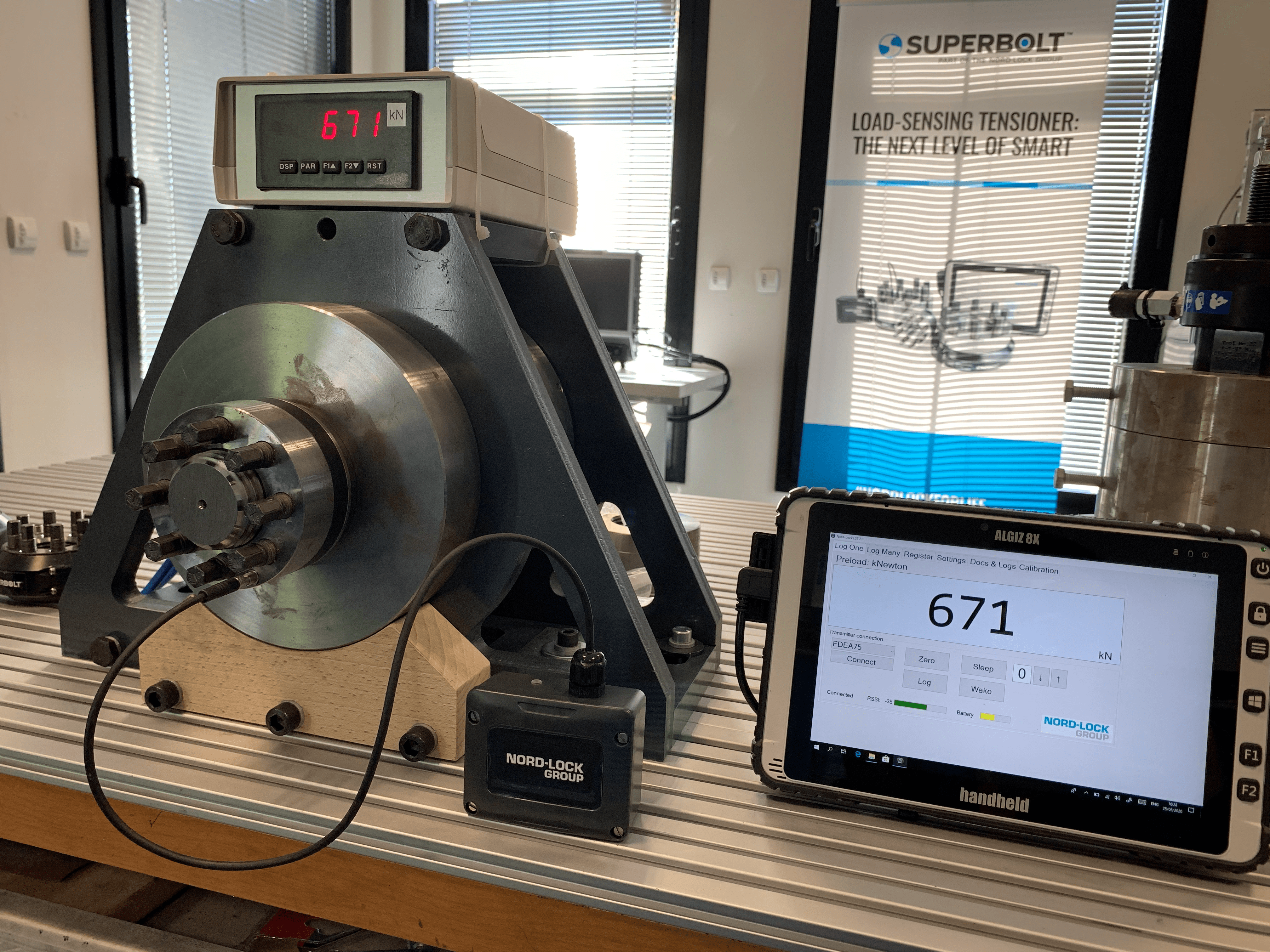
The solution has enormous potential for reducing maintenance costs and service visits. “The customer will be able to access the data from home on their computer and receive notifications if the preload on any of the joints deviates from a pre-defined amount,” adds Kellner.
Using augmented reality to assist installation
Another example of an Industry 4.0 solution, the installation of the LSTs was performed via augmented reality goggles since Covid-19 restrictions prevented Kellner and his colleagues from traveling to the site.
“We could see exactly the same things as the operator and could even point to things in their visual field,” he explains. “It didn’t matter that we were not there, and in fact, we almost did a better job because the goggles enabled us to record the whole session as well, so the operator did not need to take notes.”
Automating bridge design, inspections and maintenance
While still in the early phases, Professor Karoumi anticipates seeing Industry 4.0 trends affecting bridge design and bridge building in several ways in the coming decades. This includes using greater automation to create more optimal and sustainable bridge designs, using Big Data in Building Information Modeling (BIM), and using robots and drones for automated inspections. He also sees the potential for structural monitoring and vibration analysis.
“Just like we have in our cars today, I think we will see sensors that will detect abnormalities and help with early maintenance,” he says.
“In the future, when we buy a prefabricated component for a bridge, such as a beam or a hanger, these will already be instrumented at the factory with smart sensors that can continuously monitor its condition and warn when it’s time to replace or inspect it.”
This article is taken from Nord-Lock Group’s white paper Bridge Design, Construction & Maintenance: Insights and Best Practices for a Rapidly Changing Sector (2021)

